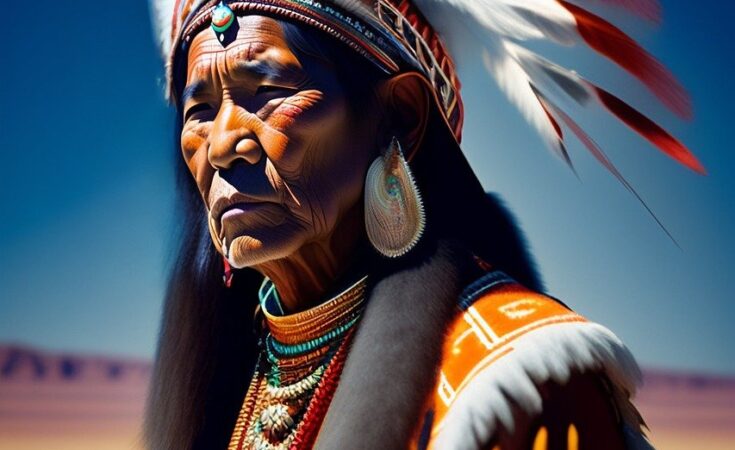
By Céline Baron, Sophrologist and Psychology Practitioner
The Navajo, also known as the Diné, possess a rich cultural tapestry deeply interwoven with spiritual beliefs, traditions, and practices. Central to their way of life is the intricate understanding of child psychology, where rituals and shamanism play pivotal roles in fostering the holistic development of children within their community. In this comprehensive exploration, we delve into the nuanced facets of Navajo child psychology, elucidating the significance of rites, the influence of shamanism, and how these elements aid both children and parents in their journey of growth and self-discovery.
Cultural Foundations:
At the heart of Navajo child psychology lies a profound reverence for nature, ancestors, and the interconnectedness of all living beings. Fundamental to their worldview is the concept of hozho, meaning harmony, balance, and beauty. Within this framework, children are perceived as integral contributors to the perpetuation of hozho, entrusted with the responsibility of upholding the equilibrium of the universe through their thoughts, actions, and interactions.
Rituals and Ceremonies:
Rituals constitute an indispensable aspect of Navajo child-rearing practices, serving as conduits for transmitting cultural values, instilling resilience, and marking significant milestones in a child’s life. One such ritual is the Navajo Baby Blessing Ceremony, conducted shortly after birth to introduce the newborn to the community and solicit blessings from the spiritual realm. Through the chanting of prayers, smudging with sacred herbs, and the bestowal of symbolic gifts, the ceremony imbues the child with a sense of belonging and protection, fostering a deep connection to their cultural heritage from infancy.
Shamanism and Healing:
Shamanism permeates Navajo society, offering a multifaceted approach to healing that encompasses physical, emotional, and spiritual dimensions. Within the context of child psychology, the role of the hatałii, or medicine man, is particularly significant. In times of adversity or illness, parents may seek the guidance of a hatałii to perform ceremonies such as the Blessingway or the Night Chant, aimed at restoring harmony and equilibrium within the child’s being. Through intricate rituals, prayers, and the invocation of benevolent spirits, the hatałii facilitates the child’s journey towards wholeness and well-being, addressing not only symptoms but also underlying imbalances within the psyche.
Holistic Development:
Navajo child psychology emphasizes the holistic development of the individual, encompassing physical, emotional, intellectual, and spiritual facets. Traditional activities such as storytelling, pottery-making, and participation in communal ceremonies serve as educational tools, imparting cultural knowledge, promoting creativity, and fostering social cohesion. Moreover, children are encouraged to cultivate a deep reverence for the natural world, viewing the earth as a sacred entity deserving of respect and stewardship.
Parental Guidance and Support:
Central to the Navajo approach to child psychology is the concept of communal responsibility, wherein parents, extended family members, and elders play integral roles in nurturing and guiding the child. Through storytelling, role modeling, and the imparting of oral wisdom, parents instill cultural values such as respect, humility, and resilience in their offspring. Moreover, parents serve as conduits for transmitting traditional knowledge, ensuring the continuity of ancestral practices across generations.
In essence, Navajo child psychology encapsulates a profound synthesis of spiritual beliefs, cultural practices, and communal values aimed at nurturing the holistic development of the individual within the context of hozho. Through rituals, ceremonies, and the guidance of spiritual healers, children are imbued with a deep sense of identity, purpose, and connectedness to the natural world. As stewards of their cultural heritage, the Navajo people continue to safeguard and celebrate the rich tapestry of their traditions, ensuring that future generations inherit not only a legacy of resilience but also a profound reverence for the interconnectedness of all life.


































